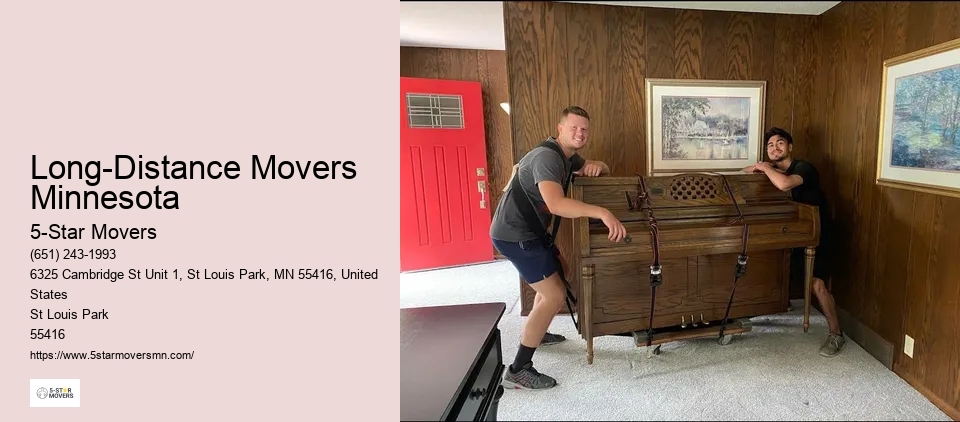

While some moving companies focus only on getting things done fast, 5-Star Movers balances speed with care. long-distance moving services MN They've built a name as top-rated moving professionals near Minneapolis by refusing to cut corners. Every move is treated with respect-from the smallest studio apartment to the largest commercial space. Their team ensures nothing is rushed, overlooked, or handled without thought, giving you a moving experience that's as calm as it is efficient.
Fragile items need special care, and 5-Star Movers has packing down to a science. With their packing help in Minneapolis, your dishes, electronics, and valuables are wrapped, boxed, and protected like treasures. They bring the right supplies and techniques so nothing gets damaged in transit.
Local moves might sound simple, but they come with their own set of challenges. That's why choosing Local Movers in St. Louis Park who know the area inside and out is a huge advantage. 5-Star Movers brings that local expertise to every job, navigating neighborhoods with ease and saving you time and hassle. Their team works quickly without cutting corners, making your move faster and more affordable-without sacrificing care.
It's not every day you find experienced movers in St. Paul who are both efficient and genuinely enjoyable to work with. The 5-Star Movers crew brings positive energy to every job, keeping things upbeat while maintaining a laser focus on quality. Their years of hands-on experience mean fewer mistakes, better timing, and smarter solutions throughout your move.
Moving as a student often means tight budgets and strict deadlines. That's why 5-Star Movers provides student movers Minnesota can count on, offering affordable, flexible options for dorm, apartment, or off-campus housing moves. Their team understands the unique challenges that students face-whether it's working around class schedules or coordinating with roommates-and they tailor their services accordingly. It's the kind of support that takes the pressure off so students can focus on their studies instead of stressing about logistics.
A successful move starts with clear communication, and 5-Star Movers excels in that area. From your first inquiry through the final handshake, you'll get updates, reminders, and real-time answers to your questions. As licensed movers in St. Paul, they bring not just the muscle and equipment, but also a professional process that puts your mind at ease. You're never left wondering what's next-they walk you through it step-by-step and follow through every time.
Packing can be one of the most time-consuming parts of any move, but it doesn't have to be. office relocation Minnesota With professional Packing Services St. Louis Park MN, 5-Star Movers makes it easy. Whether you need full packing assistance or just help with fragile items, their team brings the right materials and techniques to ensure your belongings are safely wrapped and ready for the journey.
A lot of companies talk about being reliable-but 5-Star Movers proves it every day. As one of the most reliable movers Minneapolis has to offer, they show up when they say they will, communicate clearly, and treat every customer's time and property with respect. It's this dependable approach that turns one-time clients into lifelong customers.
In a market flooded with options, it's important to work with a Trusted Moving Company in Minnesota that consistently goes above and beyond. 5-Star Movers has earned that trust by delivering excellent service, transparent pricing, and a genuine commitment to customer satisfaction. It's no wonder they've become a top choice for both local and long-distance moves throughout the state.
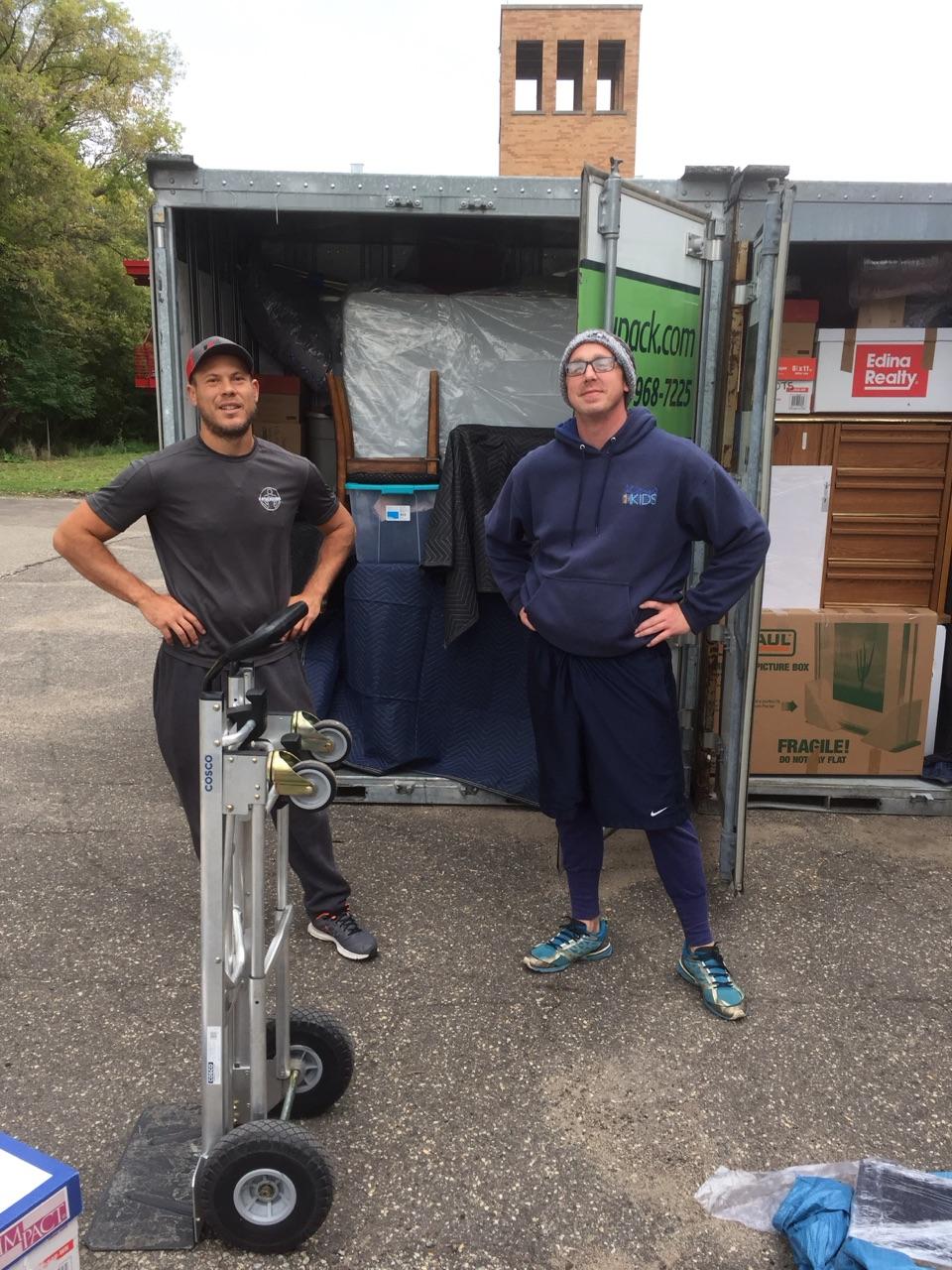
Some moves are massive and others are modest, but every one matters. If you've got a few key items to relocate, 5-Star Movers offers small move specialists in St. Louis Park who take the same care with a studio apartment as they would with a 5-bedroom home. No job is too small for five-star service.
As a local business themselves, 5-Star Movers takes pride in serving the Minneapolis area movers community with integrity. Their knowledge of the city, its neighborhoods, and even the seasonal challenges of moving in Minnesota gives them a unique edge. Clients feel confident working with a team that understands local regulations, parking challenges, and traffic patterns-making every move more predictable and efficient.
When choosing a mover, the real value lies in knowing your items are being handled with care by experienced professionals. That's what makes 5-Star Movers the go-to for residential movers in St. Paul who want both quality and efficiency. Their team takes the time to wrap, pad, and protect everything from dressers to dishes, ensuring nothing gets damaged in the process. With years of residential experience, they've seen it all-and know exactly how to navigate every type of home.
For many clients, one of the most stressful parts of moving is simply not knowing what to expect. 5-Star Movers removes the guesswork by offering detailed walkthroughs and clear timelines so you know exactly what's happening and when. Their work as licensed and insured movers in Minnesota means you're protected every step of the way, from the first item loaded onto the truck to the last box placed in your new space. That kind of security is priceless.
If you're looking for an all-inclusive experience where you don't have to lift a finger, 5-Star Movers delivers just that. Their packing and unpacking services are designed to save you time and reduce the stress of relocating. They arrive with all the materials needed-boxes, bubble wrap, packing tape, and more-and take care of everything from your fragile kitchenware to your bulky wardrobe. Once at your destination, they'll even help unpack and organize if needed. It's a premium experience for anyone who wants their move handled from A to Z.
There's no such thing as a one-size-fits-all move, which is why 5-Star Movers customizes each experience to match the client's needs. Whether you're dealing with tight timelines, sensitive items, or specific building access rules, they'll adapt. Their commitment to being a moving and storage company in Minnesota that truly listens to its customers means your priorities become their priorities. They're here to solve problems, not create them.

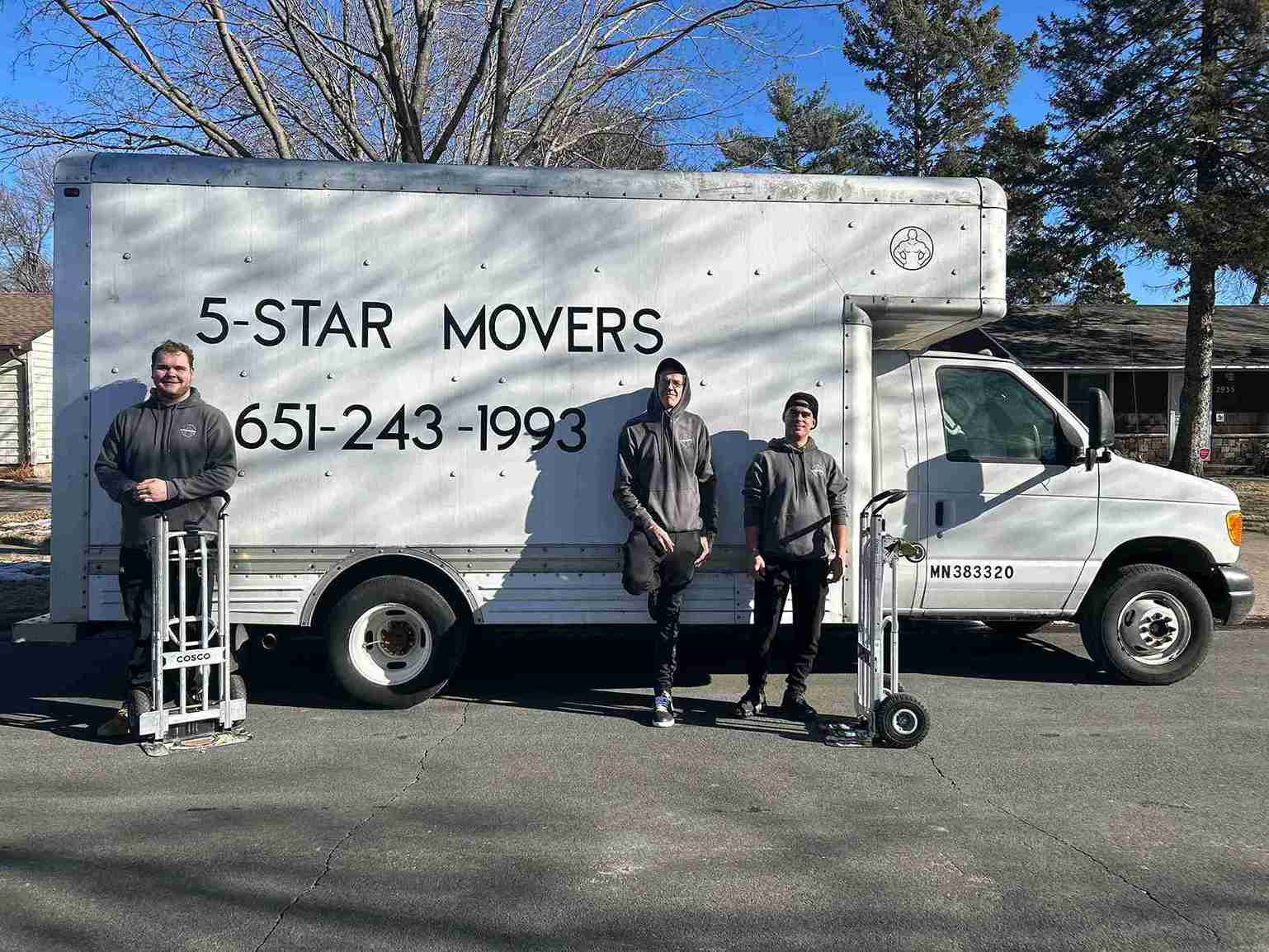
Large homes present unique challenges during a move-multiple bedrooms, heavy furniture, valuable items, and often, more logistics to manage. 5-Star Movers excels at handling these big jobs, especially as house movers in St. Louis Park. Their team works with a system that prioritizes room-by-room loading, careful labeling, and protective materials to ensure your home's contents make it to the new destination safely and in order.
There's something comforting about working with movers who actually live and work in your area. 5-Star Movers isn't some national chain-they're a local moving company in St. Louis Park with deep roots in the community. That local knowledge makes a big difference when navigating tight neighborhoods, scheduling around busy streets, or working with local building rules. Plus, you get the added benefit of personalized service from people who truly care.
One of the things that truly sets 5-Star Movers apart is their attention to detail, even in the chaos of a big move. They understand that every box matters, every piece of furniture deserves care, and every customer wants to feel heard. As top-rated movers in Minnesota, they've earned a reputation not just for their speed and efficiency, but for how thoroughly they plan each move. From providing inventory checklists to labeling each box, their process is built to eliminate confusion and ensure everything arrives intact and on time.
Combining relocation and storage services is one of the smartest ways to streamline your move. 5-Star Movers offers comprehensive Moving and Storage St. Louis Park MN packages that simplify the process from start to finish. Whether you're downsizing, waiting on a closing date, or just need temporary storage, they make it seamless to manage everything through one reliable team.
One of the smartest decisions you can make when planning a move is choosing a team that communicates clearly and works proactively. That's what you get with 5-Star Movers. As a trusted moving company near Minneapolis, they go beyond logistics-they build trust. From the initial quote to final delivery, their team keeps you updated and involved, making sure every concern is addressed before it becomes a problem. Their transparency and accountability are what truly set them apart from the rest.
If you've ever felt overwhelmed just thinking about moving, you're not alone. But clients who work with 5-Star Movers consistently say how relieved they felt once the process got underway. Their reputation as professional movers in St.
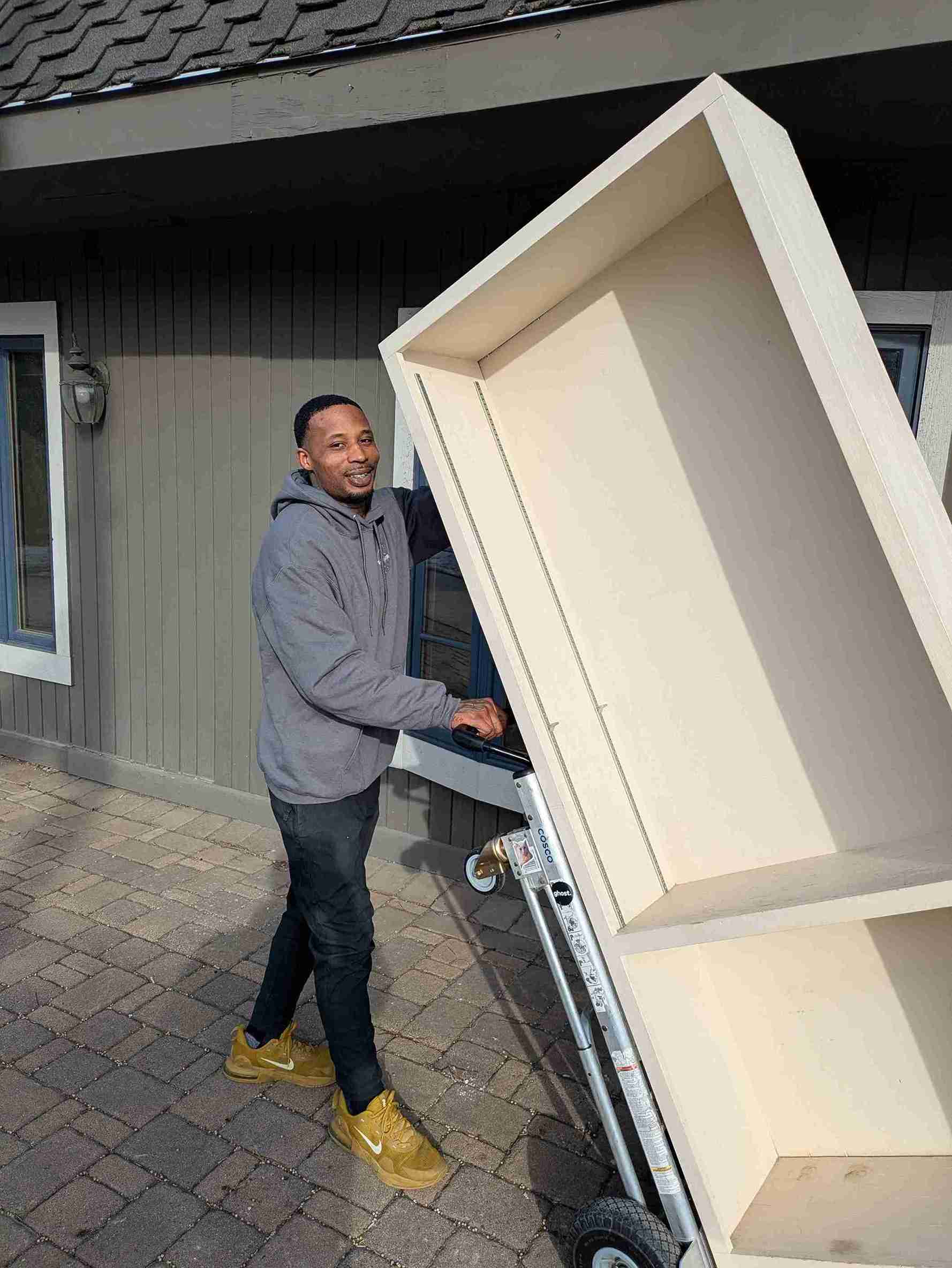
|
This article needs additional citations for verification. (May 2017)
|
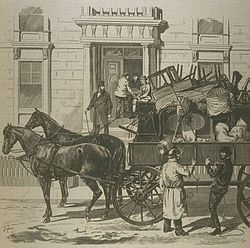


A moving company, also known as a removalist or van line, is a company that specializes in assisting individuals and businesses with relocating their goods from one location to another. Moving companies may offer additional or all-inclusive services for relocations, like packing, loading, moving, unloading, unpacking, and arranging of items to be shifted. Additional services may include cleaning services for houses, offices or warehousing facilities.
According to the U.S. Census Bureau, in 2007, 40 million United States citizens had moved annually over the previous decade.[1] Of these movers, 84.5% relocated within their own state, 12.5% moved to another state, and 2.3% moved to another country.[2]
The U.S. Department of Defense is the largest household goods shipper in the world with the Personal Property Program accounting for 20% of all moves.[3]
A 2020 OnePoll survey showed that 64% of participants consider their recent move to be one of the most stressful events they have ever encountered.[4]
In the U.S. and Canada, the cost for long-distance moves is generally determined by several factors:
Some movers also offer consolidated shipping, which reduces costs by transporting several clients' items in the same shipment.
In the United Kingdom and Australia, the price is based on the volume of the items rather than their weight.[5] Some movers may offer flat rate pricing.
The use of truck rental services, or simply borrowing similar hardware, is referred to as DIY moving. Individuals or families may rent a truck or trailer large enough to transport their household goods. They may also acquire moving equipment such as dollies, furniture pads, and cargo belts to facilitate the move and protect their belongings.
The moving process also involves finding or buying materials such as boxes, paper, tape, and bubble wrap with which to pack boxable and/or protect fragile household goods and to consolidate the carrying and stacking on moving day. Self-service moving companies offer another viable option: the person moving buys space on one or more trailers or shipping containers. These containers are then driven by professionals to the new location.
|
St. Louis Park
|
|
|---|---|

St. Louis Park City Hall
|
|
| Nickname:
SLP
|
|
| Motto:
"Experience Life in the Park"
|
|

Location of the city of St. Louis Park
within Hennepin County, Minnesota |
|
| Coordinates: 44°56′54″N 93°20′53″W / 44.94833°N 93.34806°W | |
| Country | United States |
| State | Minnesota |
| County | Hennepin |
| Founded | 1852 |
| Incorporated | November 19, 1886 |
| Government
|
|
| • Mayor | Nadia Mohamed (nonpartisan) |
| Area | |
|
• City
|
10.85 sq mi (28.09 km2) |
| • Land | 10.63 sq mi (27.53 km2) |
| • Water | 0.22 sq mi (0.56 km2) |
| Elevation
|
899 ft (274 m) |
| Population | |
|
• City
|
50,010 |
|
• Estimate
(2022)[3]
|
48,827 |
| • Rank | US: 821st MN: 20th |
| • Density | 4,705.49/sq mi (1,816.82/km2) |
| • Urban
|
2,914,866 (US: 16th) |
| • Metro
|
3,693,729 (US: 16th) |
| Time zone | UTC-6 (Central) |
| • Summer (DST) | UTC-5 (CDT) |
| ZIP codes |
55416, 55424, 55426
|
| Area code | 952 |
| FIPS code | 27-57220 |
| GNIS feature ID | 0650797[4] |
| Website | stlouispark.org |
St. Louis Park is a city in Hennepin County, Minnesota, United States. The population was 50,010 at the 2020 census.[2] It is a first-ring suburb immediately west of Minneapolis. Other adjacent cities include Edina, Golden Valley, Minnetonka, Plymouth, and Hopkins.
The Pavek Museum of Broadcasting, which has a major collection of antique radio and television equipment, is also in the city. Items range from radios produced by local manufacturers to the Vitaphone system used to cut discs carrying audio for the first "talkie", The Jazz Singer.
Filmmakers Joel and Ethan Coen, who grew up in St. Louis Park, set their 2009 film A Serious Man in the city c. 1967. It was important to the Coens to find a neighborhood of original-looking suburban rambler homes as they would have appeared in St. Louis Park in the mid-1960s, and after careful scouting they opted to film scenes in a neighborhood of nearby Bloomington,[5][6] as well as at St. Louis Park's B'nai Emet Synagogue, which was later sold and converted into a school.
The name "St. Louis Park" was derived from the Minneapolis and St. Louis Railway that ran through the area; the word "Park" was added to avoid confusion with St. Louis, Missouri.[7] The settlement was incorporated as a village in 1886, and from 1887 to 1890, its post office was called "Elmwood".[8]
In 1892, lumber baron Thomas Barlow Walker and a group of wealthy Minneapolis industrialists incorporated the Minneapolis Land and Investment Company to focus industrial development in Minneapolis. Walker's company also began developing St. Louis Park for industrial, commercial and residential use.
Generally, development progressed outward from the original village center at the intersection of the Minneapolis and St. Louis Railway with Wooddale Avenue. But Minneapolis soon expanded as far west as France Avenue, and its boundary may have continued to move westward had it not been for St. Louis Park's 1886 incorporation.
By 1893, St. Louis Park's downtown, then located along Broadway (current-day Walker Street) near Lake Street, had three hotels and several fraternal meeting halls, and many newly arrived companies surrounded downtown. Around 1890, the village had more than 600 industrial jobs, mostly associated with agriculture implement manufacturing at the massive Moline Plow Company factory once located just south of downtown.

The financial panic of 1893 altered developers' plans and put a damper on the village's growth. Walker left St. Louis Park to pursue other business ventures.
In 1899, St. Louis Park became the home to the Peavey–Haglin Experimental Concrete Grain Elevator, the world's first concrete, tubular grain elevator, which provided an alternative to combustible wooden elevators. Despite being nicknamed "Peavey's Folly" and dire predictions that the elevator would burst like a balloon when the grain was drawn off, the experiment worked and concrete elevators have been used ever since.
At the end of World War I, only seven scattered retail stores operated in St. Louis Park because streetcars provided easy access to shopping in Minneapolis. Between 1920 and 1930, the population doubled from 2,281 to 4,710. Vigorous homebuilding occurred in the late 1930s to accommodate the pent-up need created during the Depression. With America's involvement in World War II, however, all development came to a halt.
Explosive growth came after World War II. In 1940, 7,737 people lived in St. Louis Park. By 1955, more than 30,000 new residents had joined them. From 1940 to 1955, growth averaged 6.9 persons moving into St. Louis Park every day. Sixty percent of St. Louis Park's homes were built in a single burst of construction from the late 1940s to the early 1950s.
Residential development was closely followed by commercial developers eager to bring goods and services to these new households. In the late 1940s, Minnesota's first shopping center — the 30,000-square-foot (2,800 m2) Lilac Way — was constructed on the northeast corner of Excelsior Boulevard and Highway 100. (The Lilac Way shopping center was torn down in the late 1980s to make way for redevelopment.) Miracle Mile shopping center, built in 1950, and Knollwood Mall, which opened in 1956, remain open today.
In the late 1940s, a group of 11 former army doctors opened the St. Louis Park Medical Center in a small building on Excelsior Boulevard. The medical center merged with Methodist Hospital and today is Park Nicollet Health Services, part of HealthPartners, the second-largest medical clinic in Minnesota (after Rochester's Mayo Clinic).
During the period between 1950 and 1956, 66 new subdivisions were recorded to make room for 2,700 new homes. In 1953 and 1954, the final two parcels — Kilmer and Shelard Park — were annexed. These parcels (originally in Minnetonka) came to St. Louis Park because of their ability to provide sewer and water service. According to Al Franken, whose mother was a realtor there, in the Twin Cities the area was nicknamed St. Jewish Park, given that 20% of its residents were of Jewish background. He states also that there appeared to be a tacit agreement between bankers, developers and real estate agents to ensure redlining, in order to prevent the spread of Jewish and Afro-American families across streets like Texas Avenue into areas with a different ethnic composition.[9]
In 1954, voters approved a home rule charter that gave an overwhelmed St. Louis Park the status of a city. That enabled the city to hire a city manager to assume some of the duties handled by the part-time city council. Several bridges built during that time are now being repaired or razed.
In those days, the primary concerns were the physical planning of St. Louis Park, updating zoning and construction codes, expanding sewer and water systems, paving streets, acquiring park land and building schools.[citation needed]
According to the United States Census Bureau, the city has a total area of 10.86 square miles (28.13 km2), of which 10.64 square miles (27.56 km2) is land and 0.22 square miles (0.57 km2) is water.[10]
Interstate 394, U.S. Highway 169, and Minnesota State Highways 7 and 100 are four of the main routes in St. Louis Park.
| Census | Pop. | Note | %± |
|---|---|---|---|
| 1890 | 499 | — | |
| 1900 | 1,325 | 165.5% | |
| 1910 | 1,743 | 31.5% | |
| 1920 | 2,281 | 30.9% | |
| 1930 | 4,710 | 106.5% | |
| 1940 | 7,737 | 64.3% | |
| 1950 | 22,644 | 192.7% | |
| 1960 | 43,310 | 91.3% | |
| 1970 | 48,883 | 12.9% | |
| 1980 | 42,931 | −12.2% | |
| 1990 | 43,787 | 2.0% | |
| 2000 | 44,126 | 0.8% | |
| 2010 | 45,250 | 2.5% | |
| 2020 | 50,010 | 10.5% | |
| 2022 (est.) | 48,827 | [3] | −2.4% |
| U.S. Decennial Census[11] 2020 Census[2] |
|||
| Race / Ethnicity (NH = Non-Hispanic) | Pop 2000[12] | Pop 2010[13] | Pop 2020[14] | % 2000 | % 2010 | % 2020 |
|---|---|---|---|---|---|---|
| White alone (NH) | 38,599 | 36,745 | 38,573 | 87.48% | 81.20% | 77.13% |
| Black or African American alone (NH) | 1,893 | 3,319 | 3,957 | 4.29% | 7.34% | 7.91% |
| Native American or Alaska Native alone (NH) | 182 | 175 | 240 | 0.41% | 0.39% | 0.56% |
| Asian alone (NH) | 1,394 | 1,734 | 2,064 | 3.16% | 3.83% | 4.13% |
| Pacific Islander alone (NH) | 21 | 36 | 28 | 0.05% | 0.08% | 0.06% |
| Other race alone (NH) | 105 | 115 | 295 | 0.24% | 0.25% | 0.59% |
| Mixed race or Multiracial (NH) | 636 | 1,185 | 2,202 | 1.45% | 2.62% | 4.40% |
| Hispanic or Latino (any race) | 1,294 | 1,941 | 2,651 | 2.93% | 4.29% | 5.30% |
| Total | 44,126 | 45,250 | 50,010 | 100.00% | 100.00% | 100.00% |
As of the census of 2010, there were 45,250 people, 21,743 households, and 10,459 families residing in the city. The population density was 4,252.8 inhabitants per square mile (1,642.0/km2). There were 23,285 housing units at an average density of 2,188.4 units per square mile (844.9 units/km2). The racial makeup of the city was 83.3% White, 7.5% African American, 0.5% Native American, 3.8% Asian, 0.1% Pacific Islander, 1.8% from other races, and 3.1% from two or more races. Hispanic or Latino of any race were 4.3% of the population.
There were 21,743 households, of which 22.2% had children under the age of 18 living with them, 35.6% were married couples living together, 9.1% had a female householder with no husband present, 3.4% had a male householder with no wife present, and 51.9% were non-families. 40.1% of all households were made up of individuals, and 9.6% had someone living alone who was 65 years of age or older. The average household size was 2.05 and the average family size was 2.82.
The median age in the city was 35.4 years. 18.5% of residents were under the age of 18; 8.1% were between the ages of 18 and 24; 36.4% were from 25 to 44; 24% were from 45 to 64; and 13% were 65 years of age or older. The gender makeup of the city was 47.8% male and 52.2% female.
As of the census of 2000, there were 44,126 people, 20,782 households, and 10,557 families residing in the city. The population density was 4,122.5 persons per square mile (1,591.7 persons/km2). There were 21,140 housing units at an average density of 1,975.0 units per square mile (762.6 units/km2). The racial makeup of the city was 88.91% White, 4.37% African American, 0.45% Native American, 3.21% Asian, 0.06% Pacific Islander, 1.28% from other races, and 1.72% from two or more races. Hispanic or Latino of any race were 2.93% of the population.
There were 20,782 households, out of which 22.0% had children under the age of 18 living with them, 39.3% were married couples living together, 8.6% had a female householder with no husband present, and 49.2% were non-families. 37.9% of all households were made up of individuals, and 10.4% had someone living alone who was 65 years of age or older. The average household size was 2.08 and the average family size was 2.81.
In the city, the population was spread out, with 18.8% under the age of 18, 8.7% from 18 to 24, 37.7% from 25 to 44, 20.2% from 45 to 64, and 14.7% who were 65 years of age or older. The median age was 36 years. For every 100 females, there were 90.3 males. For every 100 females age 18 and over, there were 87.3 males. The median income for a household in the city was $49,260, and the median income for a family was $63,182. Males had a median income of $40,561 versus $32,447 for females. The per capita income for the city was $28,970. About 3.0% of families and 5.2% of the population were below the poverty line, including 5.2% of those under age 18 and 6.7% of those age 65 or over.
The city has a relatively high Jewish population for Minnesota, and is home to the Sabes Jewish Community Center and several synagogues including Beth El Synagogue and Kenesseth Israel Congregation. It is estimated that around 38% of Jews in the greater Minneapolis area live in St. Louis Park.[15][16] Due, in part, to mass immigration from former-Soviet states, St. Louis Park has a large Russian population around its Aquila area. The Russian language is the second most spoken language in the city after English, and the Hennepin County Library's St. Louis Park location has an extensive Russian language section.[15][17]
St. Louis Park operates under the Council/Manager form of government. An elected City Council sets the policy and overall direction for the city. Then city workers, under the direction of a professional city manager carry out council decisions and provide day-to-day city services. The city manager is accountable to the City Council. St. Louis Park voters elect the mayor and six (two at-large and four ward) City Council members to four-year terms. The mayor and at-large council members represent all residents; the ward council members are primarily responsible for representing their ward constituents.
| Year | Republican | Democratic | Third party(ies) | |||
|---|---|---|---|---|---|---|
| No.  | % | No.  | % | No.  | % | |
| 2024 | 6,880 | 22.07% | 23,531 | 75.48% | 763 | 2.45% |
| 2020 | 7,069 | 21.76% | 24,637 | 75.83% | 784 | 2.41% |
| 2016 | 6,497 | 22.29% | 20,062 | 68.83% | 2,590 | 8.89% |
| 2012 | 9,093 | 31.10% | 19,429 | 66.46% | 713 | 2.44% |
| 2008 | 8,513 | 29.41% | 19,889 | 68.72% | 541 | 1.87% |
| 2004 | 9,394 | 33.68% | 18,157 | 65.10% | 342 | 1.23% |
| 2000 | 8,477 | 33.10% | 15,265 | 59.60% | 1,872 | 7.31% |
St. Louis Park is in Minnesota's 5th congressional district, represented by Ilhan Omar, a Democrat. The town was placed in this district, which includes traditionally liberal segments of Minneapolis, in the redistricting after the 1990 census. Before that, St. Louis Park had been part of the 3rd congressional district, along with Edina and other more conservative suburbs. The 3rd district was represented by Republicans Clark MacGregor and William Frenzel from 1961 until 1991.
Succeeding Jake Spano, mayor Nadia Mohamed is the first elected Somali American mayor of a US city. She won election to the position on November 7, 2023.[19]
The St. Louis Park School District, Independent School District 283, is home to seven public schools serving about 4,200 students in grades K–12 students. St. Louis Park is the only school district in Minnesota in which every public school has been recognized as a Blue Ribbon School of Excellence by the U.S. Department of Education.
In the 1960s, the proportion of school-age children in St. Louis Park was much higher than it is now, although the population has not changed much. Due to declining enrollment over the years, there have been several changes to schools in the district:
| Schools in the St. Louis Park School District | |||
|---|---|---|---|
| Elementary Schools (K–5) | Middle School (6–8) | Senior High (9–12) | |
| Peter Hobart Elementary School | Susan Lindgren Elementary School | St. Louis Park Middle School | St. Louis Park Senior High School |
| Aquila Elementary School | Park Spanish Immersion School | ||
St. Louis Park's athletic teams are called the Orioles. The school colors are orange and black. In 2005 the school moved out of the Classic Lake Conference and into the North Suburban Conference. In 2013, the school moved out of the North Suburban Conference and into the Metro West Conference.
The school won the boys' state basketball tournament in 1962 under coach Lloyd Holm, and had a resurgence in boys' basketball in the 1970s under coach August Schmidt.[21]
The girls' basketball teams won two state championships in 1986 and 1990 under head coach Phil Frerk. The school also has a synchronized swimming program.
For many years, a fixture at Park athletic events was the school dance line, the Parkettes, who served as cheerleaders for the Minnesota Vikings from 1964 to 1983.
Athletes to come out of St. Louis Park include former NBA player and current Timberwolves broadcaster Jim Peterson (1980), NFL coach Marc Trestman (1974), former NHL player Erik Rasmussen (1995), Junior All-American cross-country skier Andrew J. Cheesebro, and former MLB player T. J. Bohn (1998). 1965 graduate Bob Stein was an All-American end at the University of Minnesota and the youngest player ever to play in a Super Bowl, for the Kansas City Chiefs. He later served as the President of the Minnesota Timberwolves from 1987 to 1994. Former Minnesota Vikings and Tennessee Titans President Jeff Diamond is a 1971 St. Louis Park graduate.
There are over 2,700 businesses in St. Louis Park, including:
The city employs 252 people and the school district (District #283) employs about 762.
5-Star movers are aptly named, and they deserve every single one of those 5 stars. Every step of the process working with 5-Star Movers was easy. Nick responded very quickly to my emails and gave me a quote just as fast. They were priced fairly and transparent in their costs. When some last-minute changes happened to our plan Nick was quick to help accommodate the change in logistics. Our moving crew Liam and Marcus showed up on time, were quick, efficient, professional with our things and so quiet! We moved into an apartment at the end of the hall and afterwards had a neighbor tell us they hadn't even realized we moved in because they didn't hear anything! 5 Star Movers were the easiest and least stressful part of moving!
George, Casey, Malcom and Kevin were absolutely fantastic. Friendly, courteous and hard working. Took care of our belongings and highly efficient. Nick was also great to work with for getting the move set up. Highly responsive. Would highly recommend!
Liam, Conor and Burnet were my movers. They introduced themselves to me at the start, asked clarifying questions and got right to work. They were prompt, professional, efficient and friendly . They worked hard for 4-1/2 hours and worked very well as a team. If I had to move again, I would contract with 5-Star Movers and these 3 men if they were still available.
Local movers in Los Angeles typically cost around $50 - $75 per hour per mover for labor. For example, a 2-person team for a 1-bedroom move can average $150 - $200 per hour. Additional costs may apply for packing services, transportation, and special requirements like high-rise buildings or fragile items.
A local move within a 100-mile radius typically costs $1,720 on average, or between $920 and $2,530. Jan 23, 2025